Understanding the Types of Tennis Strings
Tennis strings come in four main categories, each offering unique benefits․ Synthetic Gut provides durability, Multifilament enhances playability, Natural Gut offers superior feel, and Polyester maximizes spin and control for advanced players․
Synthetic Gut Strings
Synthetic gut strings are a popular choice for tennis players due to their durability and affordability․ These strings are designed to mimic the playability of natural gut but at a lower cost․ They are made from nylon or similar materials, offering a consistent performance and good tension maintenance․ Synthetic gut strings are ideal for beginners or intermediate players who prioritize durability without sacrificing feel․ They are less prone to breaking compared to natural gut and provide a softer impact on the arm, making them a great option for those with arm injuries or discomfort․ Synthetic gut strings also come in a variety of gauges, allowing players to choose between thicker strings for longer lifespan and thinner strings for better playability․ Overall, synthetic gut strings strike a balance between cost, durability, and performance, making them a versatile option for many players․
Multifilament Strings
Multifilament strings are constructed from thousands of microfibers wrapped together, offering a soft and comfortable playing experience․ These strings are designed to provide excellent playability and are ideal for players seeking a balance between power and control․ They are known for their ability to generate spin and are often preferred by intermediate players who want a string that combines durability with a responsive feel․ Multifilament strings are also less stiff than polyester strings, making them easier on the arm and suitable for players with arm injuries or sensitivity․ While they may not last as long as polyester strings, they offer consistent performance and are a great option for those who value comfort and playability․ Their softness and versatility make them a popular choice among players looking for a smooth yet dynamic playing experience․
Natural Gut Strings
Natural gut strings are crafted from high-quality cow intestines, renowned for their exceptional feel and playability․ These strings are the gold standard for players seeking optimal performance, offering precise control, rich spin potential, and a soft, responsive playing experience․ Their unique construction allows for consistent power and a comfortable feel, making them ideal for advanced players who demand the best․ However, natural gut strings are sensitive to moisture, requiring careful handling to maintain their performance․ They are also more expensive and less durable compared to synthetic or polyester options․ Despite these challenges, many professional players swear by natural gut for its unparalleled playability and ability to enhance their game․ Proper stringing techniques and regular maintenance can help extend their lifespan․ For those who can manage their upkeep, natural gut strings deliver a playing experience that is hard to match, making them a worthwhile investment for serious athletes․
Polyester Strings
Polyester strings are widely popular among advanced players due to their exceptional durability and spin potential․ These strings are made from a durable synthetic material, offering long-lasting performance and resistance to wear․ They are ideal for players who generate heavy topspin or slice, as they hold their tension well and provide a crisp, responsive feel․ Polyester strings are often strung at lower tensions to maximize playability and spin generation․ However, they can feel stiff and less forgiving for players with slower swing speeds or those who prioritize comfort․ Despite this, their durability and ability to enhance spin make them a favorite among competitive players․ Proper stringing techniques and tension adjustments are key to unlocking their full potential․ For those seeking a high-performance string that delivers consistent results, polyester is an excellent choice․ Its longevity and spin-friendly properties make it a standout option in modern tennis․
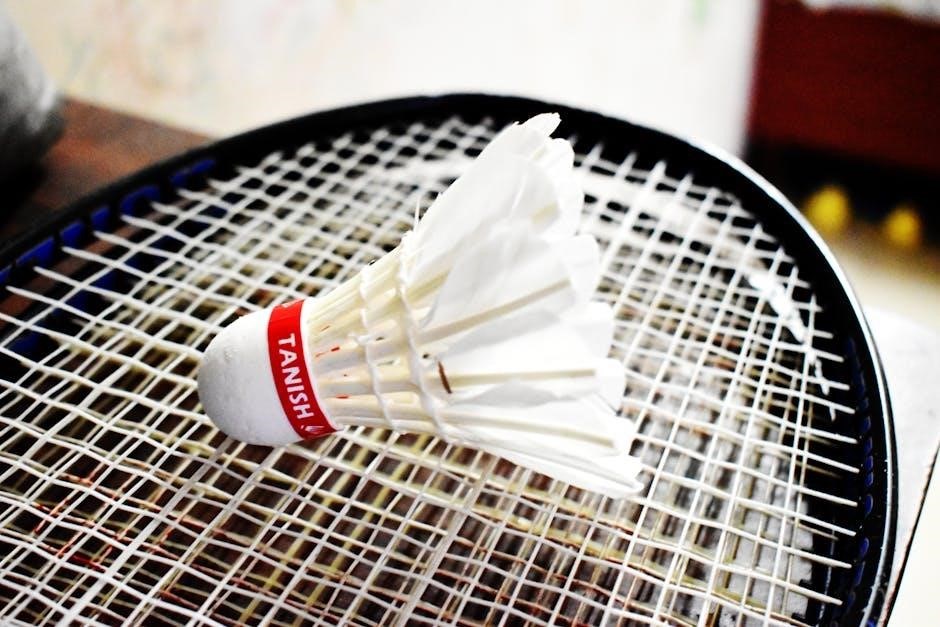
Key Factors to Consider When Choosing Tennis Strings
Tension, string thickness, and material type are crucial․ Proper tension balances power and control, while thickness affects durability and feel․ Material choice impacts spin, comfort, and overall performance․
Tension: Finding the Right Balance
Tension plays a pivotal role in determining a tennis string’s performance․ Lower tension generally offers more power and a softer feel, while higher tension provides better control and precision․ Most rackets have a recommended tension range, typically between 40 to 65 pounds, depending on the string material․ For instance, polyester strings, known for their durability and spin potential, often perform best at lower tensions, around the 30-50 pound range․ Players who prioritize spin and control may opt for higher tension, but this can lead to a stiffer feel and increased risk of injury for those with arm issues․ Experimenting within the recommended range can help players find their ideal balance between power, control, and comfort․
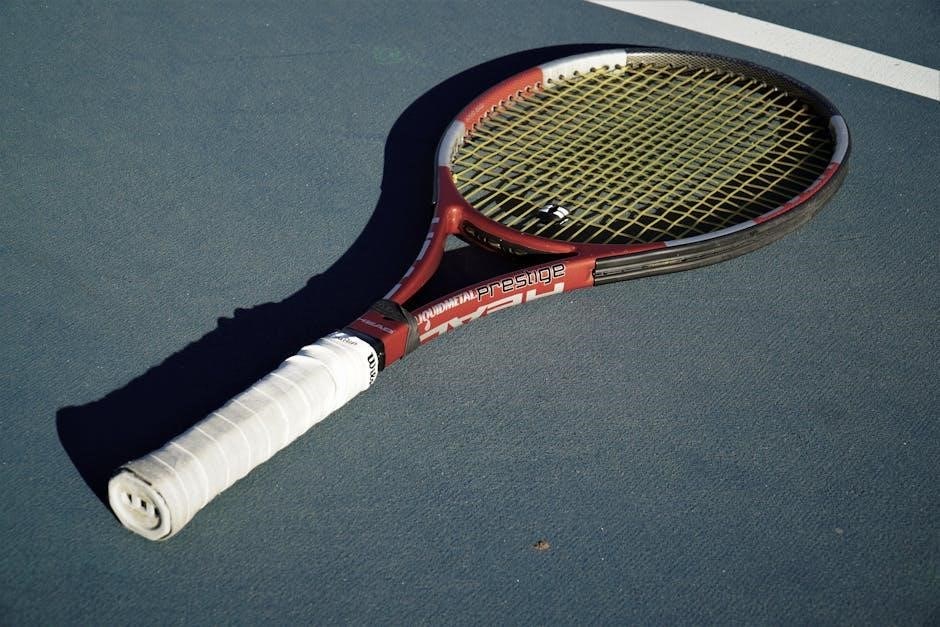
String Thickness and Its Impact on Performance
String thickness, measured in gauge, significantly influences a player’s experience․ Thicker strings (15-16 gauge) are more durable and less prone to breaking, making them ideal for heavy hitters․ Thinner strings (17-18 gauge) offer better playability, spin, and feel but wear out faster․ A medium gauge (16-17) balances durability and performance․ Players with slower swing speeds may prefer thinner strings for added power, while those with faster swings benefit from thicker strings for longevity․ Comfort also plays a role, as thinner strings can be easier on the arm․ Experimenting with different gauges helps players find their optimal balance between durability, power, and playability․ Ultimately, string thickness should align with a player’s style, preferences, and performance goals to maximize on-court effectiveness․

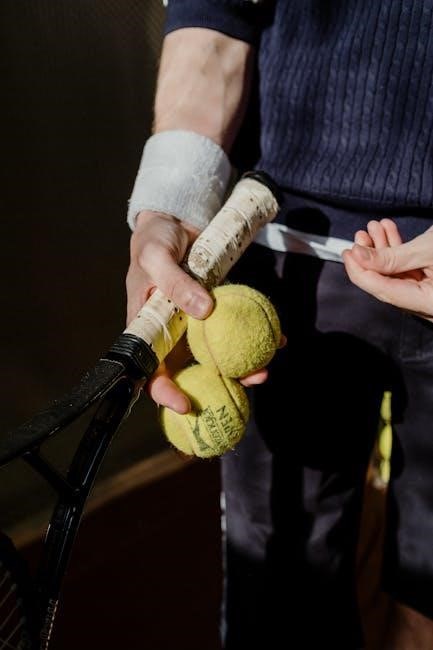
Materials and Their Characteristics

Tennis strings are crafted from diverse materials, each with unique traits․ Synthetic Gut mimics natural gut’s playability at a lower cost, while Multifilament offers a soft, comfortable feel․ Polyester excels in durability and spin potential, making it a favorite for advanced players seeking control․
Poly-Based Strings: Durability and Spin Potential
Poly-based strings are renowned for their exceptional durability and spin potential, making them a top choice for advanced players․ Constructed from polyester materials, these strings are stiff and resilient, offering long-lasting performance even under intense play․ Their durability is unmatched, especially for aggressive players who frequently break strings․ Poly-based strings excel at lower tensions, typically within the 30s to 40s, which enhances their ability to generate spin and control․ While they may lack the comfort of softer materials, their ability to maximize spin and maintain consistency makes them ideal for players seeking precision․ For those prioritizing longevity and advanced playability, poly-based strings deliver unmatched value, though they may not suit players seeking a softer feel or lower swing speed․
Soft vs․ Stiff Strings: Comfort and Playability
The choice between soft and stiff strings significantly impacts comfort and playability․ Soft strings, such as synthetic gut or multifilament, prioritize comfort and reduced vibration, making them ideal for players with arm injuries or those seeking a more forgiving feel․ These strings offer better shock absorption and are easier on the joints, providing a softer impact during ball contact․ Stiff strings, like polyester, are firmer and provide more control and spin potential but can be harsh on the arm for players with slower swing speeds or joint sensitivity․ The trade-off lies in durability and performance versus comfort, with stiff strings often lasting longer but requiring a higher skill level to handle effectively․ Players must weigh their priorities between feel and performance when deciding between soft and stiff options․
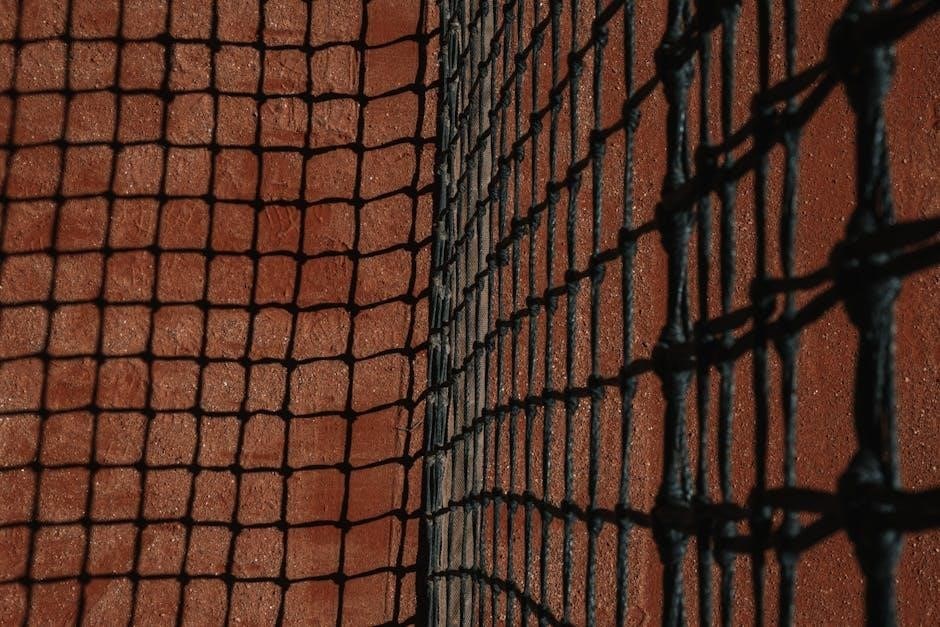
String Selection Based on Playing Style
Players should tailor string choices to their skill level․ Beginners benefit from synthetic gut, intermediates balance spin and comfort, and advanced players maximize spin with polyester for precise control․
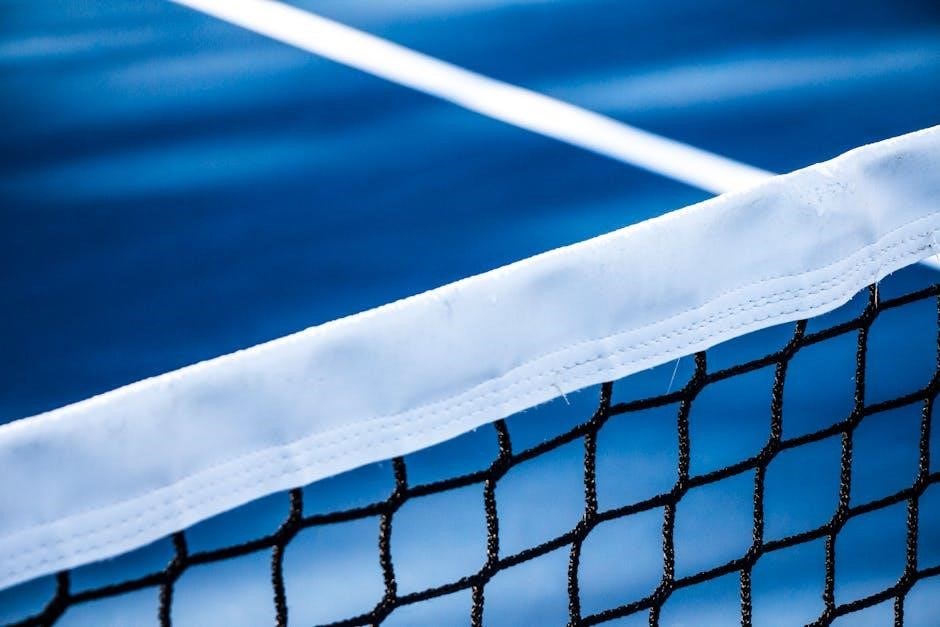
Strings for Beginners: Synthetic Gut as a Starting Point
Synthetic gut strings are an excellent choice for beginners due to their durability and playability․ They offer a good balance of power and control, making them ideal for those still developing their technique․ These strings are less expensive than natural gut and provide a comfortable feel, reducing the risk of arm fatigue․ Beginners often benefit from their consistent performance and forgiveness on off-center hits․ Synthetic gut strings are also a great way to experiment with different tensions and thicknesses to find what works best for individual styles․ Starting with synthetic gut allows new players to focus on improving their strokes without worrying about frequent string breakage․ It’s a reliable and accessible option that helps build confidence and skill on the court․
Intermediate Players: Balancing Spin and Comfort
Intermediate players often seek a balance between spin, comfort, and durability․ As their technique improves, they can benefit from strings that offer better feel and control․ Multifilament or hybrid strings are excellent options, combining the softness of synthetic gut with the added spin potential of polyester․ These strings provide a comfortable playing experience while allowing for more precise shots․ Intermediate players can also explore lower tensions to enhance playability without sacrificing durability․ Additionally, poly-based strings at lower tensions can be a good transition for those looking to maximize spin․ It’s important to experiment with different materials and tensions to find the perfect balance that suits their style․ This stage is crucial for refining skills, and the right string choice can significantly enhance consistency and confidence on the court․
Advanced Players: Maximizing Spin and Control

Advanced players typically prioritize spin, control, and precision, making polyester strings a top choice․ These strings excel at generating sharp angles and heavy topspin, while maintaining durability․ Lower tensions are often preferred to enhance playability and maximize spin potential․ For players seeking added comfort without sacrificing performance, hybrid setups combining polyester with softer materials can be effective․ Advanced players also benefit from experimenting with different string patterns and thicknesses to tailor their racquet’s response․ The ability to fine-tune equipment to match their refined technique allows for optimal performance on the court․ By leveraging high-quality materials and precise stringing, advanced players can achieve the perfect blend of power, spin, and control to dominate their matches․
